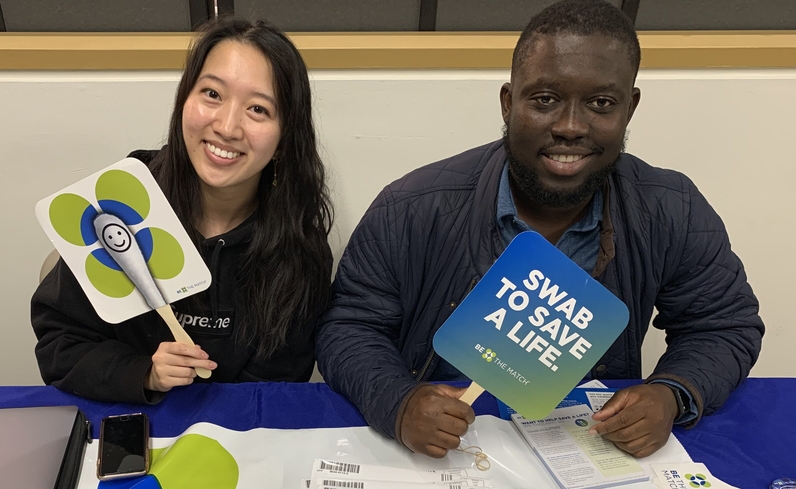
Oakland University William Beaumont School of Medicine is going head-to-head with three other medical schools as part of a friendly competition being held in the name of saving lives.
The 2022 Bone Marrow Donor Registration Drive is now underway.
OUWB has partnered with Be The Match — the National Marrow Donor Program’s annual bone marrow registration drive that’s aimed at educating and signing up as many potential donors as possible.
Led by medical students from the Student National Medical Association (SNMA), OUWB will compete with other medical schools in Michigan and Indiana to try and be the one that signs up the most people for the national bone marrow registry.
The drive will consist of in-person events this week as well as an option to participate online through Nov. 15.
Tiffany Williams, director, Diversity & Inclusion, credits students from SNMA for leading the effort.
“They’ve been very diligent in making this drive a priority every year,” she says. “It’s a testament that they’ve been able to continue the drive, especially since it had to be completely virtual for the last two years. “
‘OUWB is big on compassion’
The importance of the bone marrow registry cannot be overstated.
Bone marrow donations have the ability to help with more than 70 diseases that can be treated by a blood stem cell transplant, including leukemia and lymphoma, sickle cell disease, inherited immune disorders, and more.
According to the National Marrow Donor Program (NMDP), Be The Match helped facilitate nearly 6,7000 blood stem cell transplants or other cell therapies in 2021.
OUWB has been participating in the bone marrow donor registration drive since 2014, after OUWB’s Student National Medical Association (SNMA) proposed the idea.
Williams says it makes sense for the OUWB community to be involved in the drive because it reflects a commitment to giving back and getting involved in the community.
“OUWB is big on compassion and serving the community,” says Williams. “(The bone marrow donor registration drive) falls right in live with that.”
How does it work?
The drive is open to those who are 18 to 40 years of age, in general good health, and willing to donate to any searching patient.
The way it works is relatively simple: An individual swabs the inside of the cheek to generate a sample that is used to compare, and ideally match up, specific protein markers with patients who need a bone marrow transplant.
In-person swabs can be done Tuesday, Oct. 11, from 10 a.m. to noon; Thursday, Oct. 13, from 10 a.m. to noon; and Friday, Oct. 14, from 11 a.m. to 1 p.m. On those dates and times, medical students from SNMA will be at a registration table in the Oakland Center.
Williams says one of the most exciting aspects of this year’s drive is that it will have an in-person element for the first time since 2019.
“Being in-person gives the drive that personal touch,” she says. “We’re able to explain face-to-face the importance of registering to potentially be a donor, as well as provide access to swab kits.”
There are two other ways for people to participate.
One is to text MSOUWB22 to 61474 for a swab kit to be sent in the mail the return the swabs to Be The Match by Nov. 15.
Another is to use this link to register online and request a swab kit.
Williams says the goal is to register as many people as possible. As an extra incentive, OUWB is competing with medical schools from Central Michigan University, Indiana University, and Wayne State University.
The school that secures the most registrations by Nov. 15 will win bragging rights, according to Williams.
OUWB won the competition in 2020, and Williams says she is looking forward to the results from this year.
“We’re going to bring it home,” she says.
For more information, contact Andrew Dietderich, marketing writer, OUWB, at adietderich@oakland.edu.
To request an interview, visit the OUWB Communications & Marketing webpage.
NOTICE: Except where otherwise noted, all articles are published under a Creative Commons Attribution 3.0 license. You are free to copy, distribute, adapt, transmit, or make commercial use of this work as long as you attribute Oakland University William Beaumont School of Medicine as the original creator and include a link to this article.

